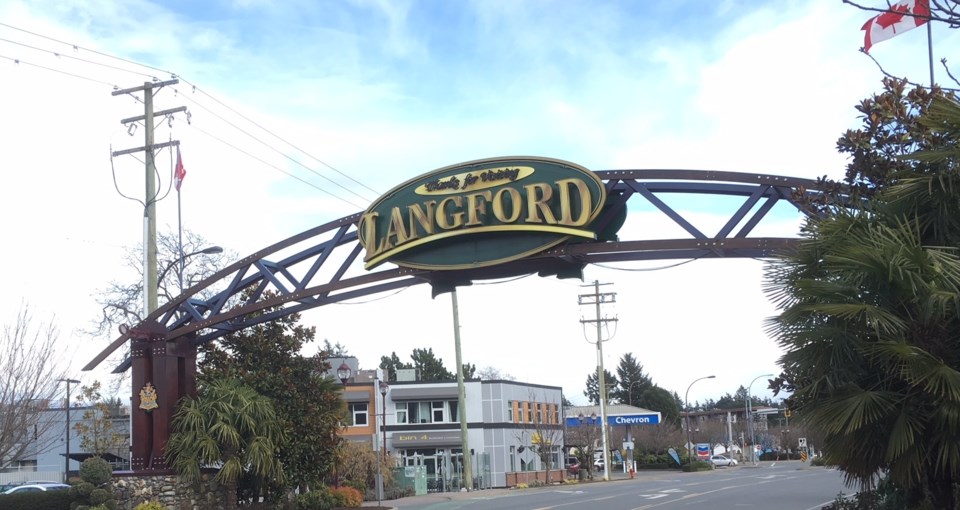The fastest-growing cities in the province are on Vancouver Island, with Island communities taking up five of the top-10 fastest-growing slots and Langford topping them all.
The numbers are part of new population estimates report prepared by B.C. Stats.
According to the report, the province had a population of 5.071 million as of July 1, 2019, an increase of 1.4 per cent from July 1, 2018.
The Island was a hotbed of population growth, with the top three spots in the category of municipalities with a population of at least 5,000, with Langford at 5.2 per cent annual growth, Duncan at 3.7 per cent and Colwood at 3.0 per cent.
Also making the top 10 from the Island were View Royal and Sooke, both at 2.5 per cent.
Langford’s position at the top is no accident, said Casey Edge, executive director of the Victoria Residential Builders Association.
“You can’t have population growth without housing and last year, Langford built 37 per cent of all housing in Greater Victoria,” he said.
Edge said unhurried processing of proposals, expensive land and obstruction from some councils slowed the building pace in some parts of the region, which has meant lower population growth for those areas.
“It also raises the price of housing, because there’s so much less supply,” he said, noting Saanich housing starts dropped 62 per cent last year, while Oak Bay dropped 73 per cent.
Oak Bay, at zero per cent growth, made the list of the top-10 slowest growth rates among larger municipalities, as did Esquimalt at minus-0.2 per cent.
Esquimalt Mayor Barb Desjardins takes issue with that number, however, pointing out the municipality has done nothing but add housing over the last year.
“That would suggest we added more people,” she said. “And we predict we will add another 1,000 over the next year or two.”
Desjardins said Esquimalt council has been focused on attracting development with new permit processes and developer incentives. They already have 1,400 new housing units either coming out of the ground or approved.
“We have absolutely made an effort to draw development and new housing,” she said. “We knew if we didn’t grow, we would continue to lose businesses and services our residents would like to have.”
Population growth requires infrastructure to keep pace, but Langford Mayor Stew Young said finding the balance is not rocket science.
“Keeping up with growth is no problem at all as long as you plan and don’t sit there for five years waiting to make a decision,” he said. “You have to use common sense. You can’t have that many people come out and live here without facilities for them.”
According to B.C. Stats, Langford has added 2,004 people over the last year and nearly 12,000 people since 2011. Young said that recreational facilities, schools, commercial centres, offices, roads and services have all been added to handle that growth.
Young said building affordable housing is Langford’s responsibility in the region because it has the land, but attracting businesses, offices and jobs is by design, to allow families to live and work in one place.
The municipality’s priorities have now turned to the needs of a larger community, and include an effort to have a theatre and a university.
“As we grow as a city, we need to think of things like that,” Young said.
Smaller towns are also facing challenges.
In the category of smaller municipalities, Tahsis (8.6 per cent) and Tofino (7.1 per cent), trailed only Sun Peaks Mountain (14.1 per cent) in growth rate, according to B.C. Stats.
Tofino Mayor Josie Osborne said the west coast community has faced challenges — water and affordable housing in particular — because of its popularity and population growth.
That has spurred the municipality to work on attracting new affordable-housing projects and working with developers on multi-family developments.
“Many in the community are concerned about commercial accommodation growth. How many more hotel beds do we want to add, because what comes with that is the need to house more staff and supply water for visitors,” she said.
Osborne said on the upside, the rate of water use has not increased at the same rate as the population. “That indicates people are better at conservation and that there are other tools available than just new water infrastructure,” she said.
As for the growth rate, Osborne said the 7.1 per cent was just a one-year blip, and Tofino tends to see growth in the three to four per cent range.



